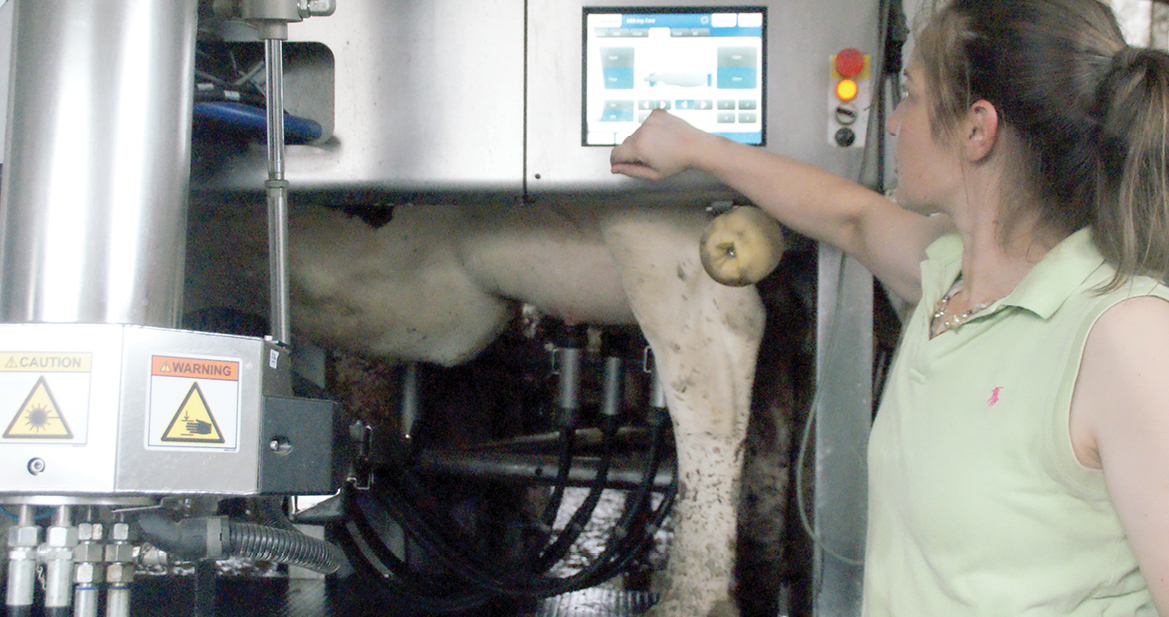
Photo by Lester Smith
Megan Hastings, a true milkmaid, points to the data panel of the Delaval robotic milking system that the Hastings farm on Hill Street put to work last year. Handling one very cooperative cow at a time, a robot arm reaches out to wash each teat, attach the cups, and keep all the business records for each cow. This happy Holstein is #63, whose sagging belly still testifies to her recent calfbirth.
There’s a new “employee” at the Hastings Farm on Hill St. and she’s working out just fine. Like something out of “The Jetsons”, the robot works 24 hours a day, 7 days a week, milking 58-62 of the farm’s dairy cows. A dream worker, she not only does the physical labor of milking the cows but also keeps track of each cow’s health, grain intake, milk produced, activity level, how long it takes to milk a particular cow, and total milk production. To maintain good hygiene, she even washes herself three times a day!
According to the manufacturer’s website, the Delaval robotic milking machine will increase milk production and enable dairy farmers to run their farm more efficiently. The robot can warn of a potential sick cow based on her activity level, grain intake, and milk production. It also advises the farmer as to when is the best time to inseminate the cow. If there is a problem with the milk, i.e., blood in it, it will dump that milk and call the “boss” who, at the Hastings Farm, as far as the robot is concerned, is Lauren Hastings.
To date, the Hastings are pleased with the robot’s performance. Without the robot, the cows were milked twice a day. With the robot, some cows are milked 3 or 4 times a day and some are turned away after just one milking. The interesting thing is that the cow decides when she wants to be milked and heads over to the robot’s barn. There is a holding area with gates set up that looks much like a rock concert admission area with the cows hanging around waiting for their turn to get milked. When it is her turn, the cow steps through the gate, the robot reads the chip which is attached to the cow’s ear and that determines the placement of the four rubber hoses that clamp on to the cow’s teats. Prior to affixing the hoses, the robot coats the teats with iodine. While being milked, the cow is treated to grain which is measured out according to past consumption, activity level, and milk production. When the milking is done, the grain supply is terminated, an air whip blows across the cow’s back, and the gate opens to let the cow out. Also, the back gate is opened and a nose nudge from the cow waiting to get in moves things along.
The Hastings still use the non-robotic method of milking for about 20 cows a day since as good a worker as the robot is, her capacity is about 60 cows a day and the farm presently has about 80 milking cows. The farm sells the bulk of its milk production, which is about 8600 lbs. every other day, to Agramark, but keeps about 17% for milk, yogurt, and cheese that it makes and sells at the farm’s location on Hill St.